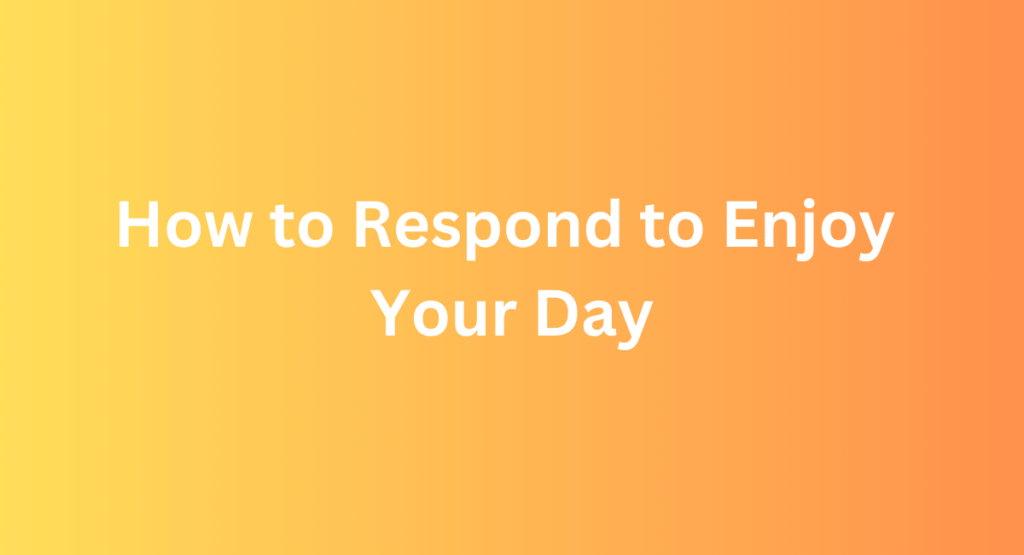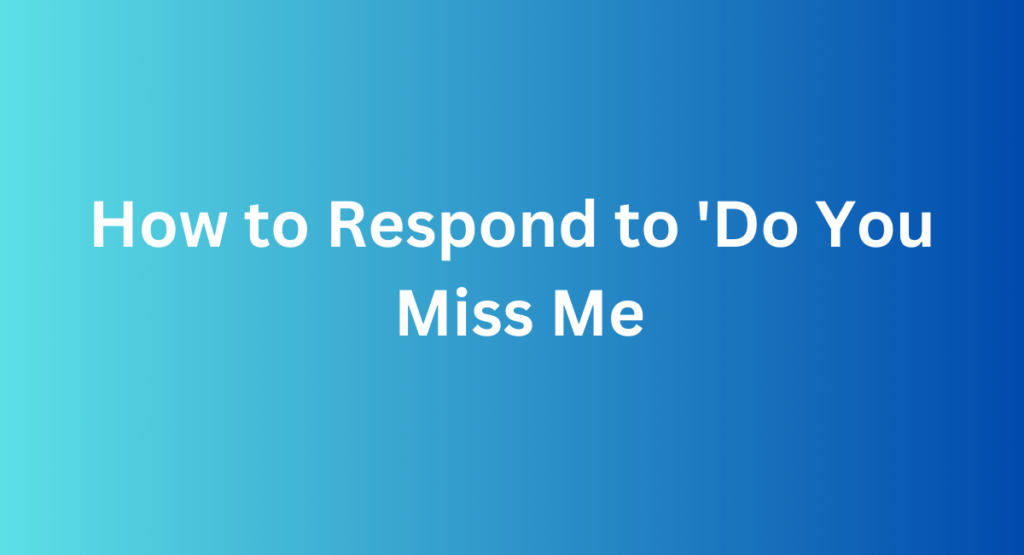To respond to “Lol,” you can simply say, “Glad you found it funny!” Or “Haha, that’s hilarious!”
In online conversations, “Lol” is a common abbreviation for “laugh out loud. ” It signifies amusement or laughter. Responding appropriately can maintain the flow of the conversation and show engagement. Simple acknowledgments or sharing a related joke can enhance the interaction.
Understanding the context is crucial; whether it’s a joke, a funny story, or a lighthearted comment, tailor your response to match the tone. Engaging in this manner can foster better communication and strengthen relationships, making online interactions more enjoyable and meaningful.
The Importance Of Online Communication
Online communication is a huge part of our lives. People use it to talk, share ideas, and connect. It’s essential to understand how to respond to messages like “Lol.” This will help you communicate better online.
Digital Age Dynamics
The digital age has changed how we talk. We use text, emojis, and short phrases. “Lol” is one of these phrases. It stands for “laughing out loud.” People use it to show something is funny. But how should you respond?
- Understand the context: Look at the whole message.
- Know your audience: Is the person a friend or a colleague?
- Choose your response: Reply with something that fits the mood.
Impact On Relationships
Online communication affects our relationships. A good response can make people feel closer. A bad response can cause misunderstandings.
| Response Type | Effect |
|---|---|
| Friendly | Builds trust |
| Neutral | Maintains status quo |
| Unfriendly | Creates distance |
Responding to “Lol” the right way is important. It shows you care about the conversation. It also helps build better relationships online.
Decoding ‘lol’
Understanding how to respond to “Lol” can be tricky. This common internet slang has many nuances. Let’s decode “Lol” to use it effectively in conversations.
Origins And Evolution
“Lol” stands for “Laugh Out Loud.” It started in the early days of the Internet. People used it to show they found something funny. Over time, its meaning has evolved. Now, it can express different emotions, from genuine laughter to mild amusement.
Originally, “Lol” was mostly used in chat rooms and forums. With the rise of texting and social media, it spread even more. Today, it’s a staple in digital communication. Understanding its origins helps us see how its use has changed.
Common Usage Scenarios
People use “Lol” in various situations. Here are some common ones:
- Genuine Laughter: When someone finds something really funny.
- Awkward Pause: To fill an awkward silence in a conversation.
- Lighten the Mood: To make a serious message seem less harsh.
- Show Agreement: To show you understand or agree with someone.
Responding to “Lol” depends on the context. If someone uses it to show genuine laughter, respond with a funny comment or emoji. If it’s used to lighten the mood, acknowledge their message lightly.
Remember, “Lol” can mean different things to different people. Knowing the context is key to responding appropriately.
| Context | Possible Response |
|---|---|
| Genuine Laughter | Share another joke or funny comment. |
| Awkward Pause | Change the topic or ask a question. |
| Lighten the Mood | Respond with a light-hearted comment. |
| Show Agreement | Acknowledge their point and add your view. |
Understanding these scenarios helps in crafting the right response. Always consider the tone and context of the conversation.
Understanding Context
Knowing how to respond to “lol” depends on understanding the context. “Lol” can mean different things in different situations. It can be tricky to decide the best response. Pay attention to the situation and the tone of the conversation.
Situational Appropriateness
Situational appropriateness is important when responding to “lol”. Here are some tips:
- Casual Chats: Use emojis or jokes to keep it light.
- Serious Conversations: Acknowledge with a simple “I understand.”
- Work Emails: Keep it professional. Avoid using “lol” unless the other person does.
Reading Between The Lines
Reading between the lines helps you understand the real meaning behind “lol”. Here are some common uses:
| Situation | Meaning | Suggested Response |
|---|---|---|
| Joke or Funny Story | They found it funny. | Reply with a laughing emoji or “Haha, that’s funny!” |
| Awkward Situation | They feel uncomfortable. | Change the topic or address the issue. |
| End of Conversation | They want to end the chat. | Say “Talk later!” or “Goodbye.” |
Understanding these cues helps you respond better. Reading between the lines ensures you get the true meaning. Use this knowledge to keep conversations smooth and friendly.
Crafting Your Response
Responding to “lol” might seem simple, but it can be tricky. Crafting the perfect response involves understanding the context and matching the tone. Adding value to your reply can also make the conversation more engaging.
Matching Tone
Always gauge the tone of the “lol”. Is it playful, sarcastic, or just polite? Your response should align with this tone.
- Playful: A playful “lol” deserves a fun reply. Use emojis or a funny comment.
- Sarcastic: A sarcastic “lol” might need a witty comeback. Use humor carefully.
- Polite: A polite “lol” can be followed by a friendly comment. Keep it light and positive.
Adding Value
Don’t just reply for the sake of it. Add value to the conversation.
- Share a related joke: If the “lol” was about something funny, share another joke.
- Ask a question: Keep the conversation going by asking a related question.
- Offer a compliment: If appropriate, compliment the person. It shows you appreciate their humor.
| Context | Response Example |
|---|---|
| Playful | 😂 That’s hilarious! Got more jokes? |
| Sarcastic | 😏 Oh, I see what you did there! |
| Polite | 😊 You’re too kind! Thanks for the laugh. |
Humor And Wit
Responding to “Lol” can be tricky. It needs a touch of humor and wit. A clever reply can keep the conversation fun. Let’s explore some ways to make your responses engaging and funny.
Using Emojis
Emojis add fun to your replies. They can convey emotions quickly. Here are some examples:
- 😂 It shows you’re laughing too.
- 😜 – Adds a playful tone.
- 🤔 – Indicates you’re thinking of something funny.
Using emojis can make your response more lively.
Injecting Personality
Your personality shines through your words. Add a personal touch to your replies. Here are some tips:
- Use catchphrases you love.
- Include inside jokes.
- Show your unique sense of humor.
Be yourself and let your true self come through.
Maintaining Etiquette
Responding to “Lol” can be tricky. It is crucial to maintain etiquette. Your response should show respect and understanding. This helps in keeping conversations smooth and enjoyable. Below are some tips to guide you.
Respect And Sensitivity
Respect the other person’s feelings. Sensitivity is key in text communication. Always consider how your reply might be received. If someone says “Lol,” they could be joking or trying to lighten the mood. Responding with kindness and a positive tone is usually a good idea.
- Acknowledge the joke or comment.
- Reply with a similar humorous tone.
- Avoid sarcasm, as it can be misunderstood.
Avoiding Misunderstandings
Misunderstandings happen easily in texts. Clear communication is essential. To avoid confusion, be straightforward. If the “Lol” puzzles you, ask a clarifying question.
- Ask, “What do you mean?”
- Or say, “That was funny!”
- Clarify if you are unsure of their intent.
Using emojis can also help. They add context to your response. Here is a simple table with examples:
| Situation | Response |
|---|---|
| Friend jokes | “Haha, that’s funny! 😂” |
| Funny meme | “Lol, love it! 😆” |
| Light sarcasm | “Lol, I get it! 😅” |
By following these tips, you can ensure your responses are polite and clear. Maintaining etiquette in text conversations is essential for good communication.
Tools And Techniques
Responding to “LOL” can be a fun and engaging activity. Using the right tools and techniques can make your response more interesting. Below are some popular tools and techniques to help you respond effectively.
Text Abbreviations
Text abbreviations are quick and simple. They convey your message fast. Some popular abbreviations include:
- ROFL: Rolling on the floor laughing
- LMAO: Laughing my ass off
- BRB: Be right back
- GTG: Got to go
Use these abbreviations to add humor and keep the conversation light.
Gifs And Memes
GIFs and memes add a visual element to your response. They are popular on social media. Here are some ways to use them:
| Type | Use |
|---|---|
| GIFs | Short, looping videos that show emotions. |
| Memes | Funny images or text that relate to a situation. |
Use websites like Giphy or Imgur to find the perfect GIF or meme. This makes your response more engaging and fun.
Building Connection
Building a connection through chat can be challenging. When someone responds with “Lol,” it often feels like a conversation killer. But it doesn’t have to be. By engaging the right way, you can turn a simple “Lol” into a meaningful connection.
Engaging Conversationally
To engage conversationally, respond to “Lol” with a question. For example, “Lol, that was funny! What made you laugh the most?” This keeps the conversation going. Asking questions shows interest in the other person.
Another tactic is sharing a related story. If someone says “Lol” to your joke, say, “That reminds me of the time…” This invites them to share their thoughts or experiences.
Creating Memorable Interactions
Create memorable interactions by being genuine. Use emojis to express emotions. For example, “Lol 😂, I can’t believe that happened!” This makes your response feel more personal.
Use humor to make your conversations memorable. Share a funny meme or a witty comment. Humor creates a bond and makes the chat enjoyable.
| Response | Effect |
|---|---|
| Ask a question | Keeps the conversation going |
| Share a story | Invites more sharing |
| Use emojis | Adds a personal touch |
| Be humorous | Creates a bond |
Frequently Asked Questions
What Is A Good Response To Lol?
A good response to LOL can be: “That’s hilarious!” Or “Glad you found it funny!” Keep it light and engaging.
What To Say When Someone Replies With Lol?
Respond with a light-hearted comment or joke. You can also ask a related question to continue the conversation.
When A Guy Uses Lol In Text?
A guy uses “LOL” in text to indicate laughter, amusement, or that something is funny. It lightens the conversation.
What Does Lol Mean As A Response?
LOL means “laugh out loud. ” People use it to show amusement or that something is funny.
Conclusion
Mastering the art of responding to “lol” can enhance online interactions. Keep responses genuine and context-appropriate. Experiment with humor, emojis, or follow-up questions to keep the conversation flowing. Remember, understanding the tone and context is key to maintaining engaging and meaningful communication.



